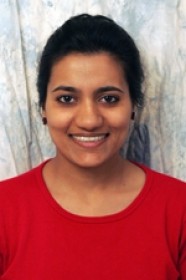PhD Thesis Defense
Parallel Algorithms for Real-time Motion Planning
Event Location: NSH 1305Abstract: For decades, humans have dreamed of making cars that could drive themselves, so that travel would be less taxing, and the roads safer for everyone. Toward this goal, we have made strides in motion planning algorithms for autonomous cars, using a powerful new computing tool, the parallel graphics processing unit (GPU). [...]
Probabilistic Reasoning and Learning on Permutations: Exploiting Structural Decompositions of the Symmetric Group
Event Location: NSH 1305Abstract: Probabilistic reasoning and learning with permutation data arises as a fundamental problem in myriad applications such as modeling preference rankings over objects (such as webpages), tracking multiple moving objects, reconstructing the temporal ordering of events from multiple imperfect accounts, and more. Since the number of permutations scales factorially with the number [...]
Recognizing and Interpreting Objects With the Visual Memex
Event Location: NSH 1305Abstract: Recognizing and reasoning about the objects found in an image is one of the key problems in computer vision. This thesis is based on the idea that in order to understand a novel object, it is often not enough to recognize the object category it belongs to (i.e., answering “What is [...]
Behavioral Correlates of Hippocampal Neural Sequences
Event Location: NSH 3305Abstract: Sequences of neural activity representing paths in an environment are expressed in the rodent hippocampus at three distinct time scales, with different hypothesized roles in hippocampal function. As an animal moves through an environment and passes through a series of place fields, place cells activate and deactivate in sequence, at the [...]
Segment-based SVMs for Time Series Analysis
Event Location: NSH 3305Abstract: Enabling computers to understand human and animal behavior has the potential to revolutionize many areas that benefit society such as clinical diagnosis, human-computer interaction, and social robotics. Critical to the understanding of human and animal behavior, and any temporally-varying phenomenon in general, is the capability to segment, classify, and cluster time [...]
Differentially Constrained Motion Planning with State Lattice Motion Primitives
Event Location: GHC 4405Abstract: Robot motion planning with differential constraints has received a great deal of attention in the last few decades, yet it still remains a challenging problem. Among a number of reasons, three stand out. First, the differential constraints that most physical robots exhibit render the coupling between the control and state spaces [...]
Vision-Based Navigation for a Small Fixed-Wing Airplane in Urban Environment
Event Location: NSH 1507Abstract: An urban operation of unmanned aerial vehicles (UAVs) demands a high level of autonomy for tasks presented in a cluttered environment. While fixed-wing UAVs are well suited for long-endurance missions at a high altitude, enabling them to navigate inside an urban area brings another level of challenges. Their inability to hover [...]
Augmenting Cartographic Resources and Assessing Roadway State for Vehicle Navigation
Event Location: NSH 1507Abstract: Maps are important for both human and robot navigation. Given a route, driving assistance systems consult maps to guide human drivers to their destinations. Similarly, topological maps of a road network provide a robotic vehicle with information about where it can drive and what driving behaviors it should use. Maps simplify [...]
Lumenhancement: Exploiting Appearance for Planetary Modeling
Event Location: NSH 1109Abstract: Planetary environments are among the most hazardous, remote and uncharted in the solar system. They are also critical to the search for life, human exploration, resource extraction, infrastructure and science. These applications represent the prime unexploited opportunity for automated modeling, but robots are under-utilized for this purpose. There is urgent need [...]
Attention-guided Algorithms to Retarget and Augment Animations, Stills, and Videos
Event Location: GHC 4301Abstract: Still pictures, animations and videos are used by artists to tell stories visually. Computer graphics algorithms create visual stories too, either automatically, or by assisting artists. Why is it so hard to build algorithms that can manipulate the content created by a visual artist? A primary reason is that artists introspect [...]









